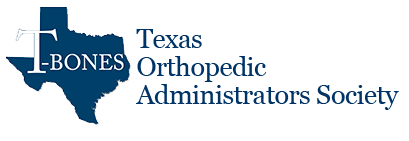ICD-10
- New Orthopedics Clinical Concepts Guide
- ICD-10 scenario 1: Revision TKA after infection of primary TKA
- ICD-10 scenario 2: Removal of Hardware after ORIF clavicle
ICD-10 scenario 1: Revision TKA after infection of primary TKA
Patient received TKA for knee primary OA. The patient suffers a complication of joint infection few weeks after surgery. The Dr takes out the TKA and cleans out the joint and stages the procedure. 3 months after cleaning up the joint he does the revision TKA
ICD-10 for initial surgery: M17.11 right or M17.12 left
ICD-10 for the clean up surgery: T84.53XA right or T84.54XA left with Z96.651 right or Z96.652 – this would be reported each time they bring them back to clean out infection
ICD-10 for the revision TKA: Z47.33; Z89.521 (RT) or Z89.522 (LT) – optional and Z96.651 (RT) or Z96.652 (LT)
Official sources:
2015-2016 guidelines ICD-10
For complication codes, active treatment refers to treatment for the condition described by the code, even though it may be related to an earlier precipitating problem.
For example, code T84.50XA, Infection and inflammatory reaction due to unspecified internal joint prosthesis , initial encounter, is used when active treatment is provided for the infection, even though the condition relates to the prosthetic device, implant or graft that was placed at a previous encounter.
1st Quarter 2015 Coding Clinic and 4th Quarter 2011 Coding Clinic
QUESTION: The patient developed an infection after a primary left total hip replacement and was admitted to the hospital for surgical treatment. At surgery, the prosthesis was removed. An antibiotic impregnated methylmethacrylate cement spacer was inserted to fill the acetabulum. The patient was discharged on day five and placed on IV antibiotics for six weeks.
This same patient was readmitted seven weeks later for removal of the antibiotic spacer and revision of the total left hip replacement with insertion of a new hip prosthesis, because the infection had resolved. What are the appropriate diagnosis code assignments for both inpatient admissions? Would the second admission still be active treatment of the infection (T84.5-), and therefore coded as initial encounter with 7th character “A,” or is this routine care during the healing phase and coded as a subsequent encounter?
ANSWER: First encounter to remove the infected prosthesis
For the initial admission, assign code T84.52XA, Infection and inflammatory reaction due to internal left hip prosthesis, initial encounter, as the principal diagnosis. Code Z96.642, Presence of left artificial hip joint, is assigned as an additional diagnosis
Last encounter to place new prosthesis
For the second admission (last encounter), assign code Z47.32, Aftercare following explantation of hip joint prosthesis, as the principal diagnosis. Subcategory Z47.3 includes encounters for joint prosthesis insertion following prior explantation.
Code Z47.32 is used to report patient encounters for joint prosthesis insertion following a prior explantation of the prosthesis, where it was necessary to stage the procedure. There may have been a medical need to remove an existing joint prosthesis (e.g., due to infection or other problem), but it was not possible to replace the prosthesis during the initial episode of care.
Also Code Z89.622 Acquired absence joint, left hip and Code Z96.642, Presence of left artificial hip joint, is assigned as an additional diagnosis
Code T84.52X- is not appropriate for the second admission since the infected joint prosthesis had been previously removed.
Information was provided by
Margie Scalley Vaught, CPC, CPC-H, CPC-I, CCS-P, MCS-P, ACS-EM, ACS-OR Auditing, Coding, Documentation and Compliance Consulting Healthcare Consultant scalley123@aol.com
ICD-10 scenario 2: Removal of Hardware after ORIF clavicle
Patient sustains a fall and fractures his clavicle. Dr performs ORIF to stabilize the fracture. 6 to 9 months later patient complains of pain over the hardware and wants the hardware removed. Dr removes the hardware from the clavicle fracture which has healed.
ICD-10 for initial surgery: Fx clavicle with 7th character A for the ORIF – but you need to know was it shaft, neck, etc. location for the correct code.
ICD-10 for the removal of hardware: T84.84XA – painful hardware – if there was NO pain and they just want out asymptomatic hardware then it would be the same Sxx clavicle code and the 7th character would be D.
Information was provided by
Margie Scalley Vaught, CPC, CPC-H, CPC-I, CCS-P, MCS-P, ACS-EM, ACS-OR Auditing, Coding, Documentation and Compliance Consulting Healthcare Consultant scalley123@aol.com





